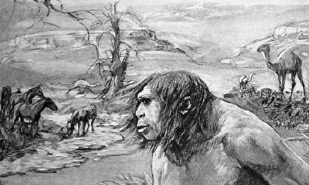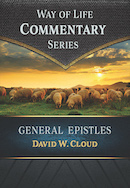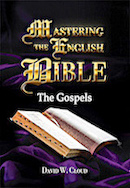866-295-4143, fbns@wayoflife.org

"Nebraska Man" illustration (cropped) as published in Illustrated London News, 1922
It has been said that “a picture is worth a thousand words,” and I have no doubt that more people have been influenced to believe in evolution by artwork than by words. From its inception, Darwinian evolution has been popularized by art.
Lying art.
NEBRASKA MAN
In 1922, Henry Osborn, president of the American Natural History Museum in New York City, announced the discovery of a new missing link between apes and man based on “fossils” discovered in Nebraska.
This was based on a tooth discovered five years earlier by Nebraska rancher Harold Cook. Joining Osborn in the conclusion that a new apeman had been discovered were William Gregory (museum curator) and Milo Hellman, who were regarded as two of the world’s leading authorities on the teeth of primates. They concluded, “On the whole, we think its nearest resemblances are with ‘Pithecanthropus’ and with men rather than with apes” Museum novitiates, no. 27).
Osborn named the missing link Hesperopithecus haroldcookii (Herperopithecus means “ape of the western world”).
In an article for The Forum, May 1925, Osborn said, “Why shall we do with the Nebraska tooth? ... Certainly we shall not banish this bit of Truth because it does not fit in with our preconceived notions and because at present IT CONSTITUTES INFINITESIMAL BUT IRREFUTABLE EVIDENCE THAT THE MAN-APE WANDERED OVER FROM ASIA INTO NORTH AMERICA.”
The popular and influential Illustrated London News of June 24, 1922, published a two-page black and white drawing of “Nebraska Man” based on collaboration with evolutionist Grafton Elliot Smith, who joined Osborn in the belief that the tooth was that of an ape-man. Smith, an anatomist, was the leading specialist on the evolution of the brain of that day, but he was very gullible. He had fallen hook-line-and-sinker for the Piltdown hoax. The text of the article accompanying the Nebraska Man drawing was by Smith, who stated, “Mr. Forestier [the artist] has made a remarkable sketch to convey some idea of the possibilities suggested by this discovery. ... if, as the peculiarities of the tooth suggest, Hesperopithecus was a primitive forerunner of Pithecanthropus, he may have been a creature such as Mr. Forestier has depicted.” The language was tentative, no doubt, but even to pretend that a single well-worn tooth holds the possibility of being a missing link is ridiculous. The drawing depicts Mr. and Mrs. Nebraska Man. They are stooped and naked, human in body but somewhat apelike in the face. The brutish ape-man holds a club while his “wife” holds some small animal while looking at the male with a very stupid expression on her ugly ape face.
Though both Osborn and some of Smith’s colleagues at the British Museum described the drawing as inaccurate and “of no scientific value,” their opinions were not blazoned to the public like the mythical drawing was, and no public repentance was made. Evolution’s art has influenced far more people to believe their myths than evolution’s scientific reports. Forestier’s imaginary artwork, beginning with Piltdown, appeared in the Illustrated London News and other publications for the first three decades of the twentieth century and influenced countless people.
Osborn used the Nebraska Man in his antifundamentalist newspaper articles and radio broadcasts to tear down faith in the Genesis record (Phillip Johnson, Darwin on Trial, p. 5).
In his 1925 book The Earth Speaks to Bryan, Osborn, mocking the fundamentalist leader William Jennings Byran, said:
“... the Earth spoke to Bryan from his own State of Nebraska, in the message of a diminutive tooth, the herald of our knowledge of anthropoid apes in America. The Hesperopithecus tooth is like the ‘still small voice’; its sound is by no means easy to hear. ... this little tooth speaks volumes of truth--truth consistent with all we have known before” (p. 40).
That same year, at the Scopes Trial, both Nebraska Man and Piltdown were used as evidence to bolster the theory of evolution. According to the New York Times, June 26, 1925, Henry Osborn was one of the “eleven scientists” that were scheduled to testify in defense of the evolutionist John Scopes (though they did not actually appear at the trial). Osborn already hated Bryan, the special prosecutor in the case. In 1922, Osborn had joked that Nebraska Man might better be named Bryopithecus “after the most distinguished Primate which the State of Nebraska has thus far produced” (“The Scopes Monkey Trial,” http://www.bradburyac.mistral.co.uk/tenness1.html). Nebraska Man and Piltdown were mentioned at the trial in affidavits by “expert witnesses” Fay-Cooper Cole and Horatio Newman (professors at the University of Chicago), and Judge Raulston allowed their reports to be read into the court record.
Francis Hitching observes:
“So the trial that became a turning point in U.S. educational history, not to be significantly challenged for the next half-century, was steered toward its verdict by a pig tooth ... and an outright fake exhibit whose perpetrator is still not known” (The Neck of the Giraffe, p. 182).
Osborn’s animosity toward creationists continued to be expressed in his 1926 book Evolution and Religion in Education: Polemics of the Fundamentalist Controversy of 1922 to 1926 (New York: Charles Scribner’s Sons).
In his 1927 book The Evolution of Man, Smith was still pretending that the tooth represented Nebraska Man, though he was now expressing doubt. He said, “I think the balance of probability is in favour of the view that the tooth found in the Pliocene beds of Nebraska may possibly have belonged to a primitive member of the Human Family.”
Further field work in Nebraska found that the tooth was actually that of an extinct pig called Prosthennops. In late 1927, Osborn’s colleague William King Gregory, who had joined Osborn in tentatively identifying the tooth as apish, published a short article in the Science journal with the title “Hesperopithecus Apparently not an Ape nor a Man.” On February 20, 1928, The New York Times ran the headline “Nebraska Ape Tooth Proved a Wild Pig’s.” The next day the Times of London reported “Hesperopithecus Dethroned.”
In the early 1970s, the “extinct” Prosthennops was found to be alive and well in Paraguay (Taylor, p. 229).
Evolutionists who try to debunk the Nebraska Man episode as insignificant and criticize creationists for making an issue of it, point to the fact that Nebraska Man was never widely accepted and was rejected by the evolutionary community within a few years. This is true. The two-volume Human Origins, published in 1924, stated that “the teeth are not well preserved, so that the validity of Osborn’s determination has not yet been generally accepted.” What these apologists do not emphasize properly, though, is the fact that the head of the American Museum of Natural History, one of the most august scientific institutions, joined by his most learned colleagues, rushed to name an entirely new species from a mere worn tooth. They announced the new “missing link” to the world, and they and other scientists used this “evidence” in a court of law in one of most famous trials in history to debunk the Bible and deride Bible believers. A public apology should have been printed in a full-page ad in the leading publications of the land and announced prominently on radio, but they issued no such apology. Instead of trying to find some way to criticize creationists through this mess, evolutionists today should be humbly apologizing for the damage done to the Bible cause by this fiasco that was perpetrated by their forefathers.
Osborn so hated the Creator God of the Bible and the famous fundamentalist William Jennings Bryan and was so eager to find a find a missing link from Bryan’s own home state that he merely saw what he wanted to see.
Another motive in his rush to proclaim a missing link could have been Osborn’s evolutionary racism. In 1926, Osborn wrote:
“The Negroid stock is even more ancient than the Caucasian and Mongolian, as may be proved by an examination not only of the brain, of the hair, of the bodily characters, such as the teeth, the genitalia, the sense organs, but of the instincts, the intelligence. The standard intelligence of the average adult Negro is similar to that of the eleven-year-old youth of the species Homo sapiens” (“The Evolution of Human Races,” Natural History, Jan.-Feb. 1926).
Osborn was prominent in the eugenics movement, which was dedicated to the development of “a new and improved race of men.” Osborn was the president of the Second International Congress of Eugenics in 1921. He praised the work of racists Jon Mjøen and Hermann Lundborg for giving men “a new appreciation of the spiritual, moral and physical value of the Nordic race” (Edwin Black, War Against the Weak: Eugenics and America’s Campaign to Create a Master Race, p. 244).
- Receive these reports by email
- www.wayoflife.org
______________________
Sharing Policy: Much of our material is available for free, such as the hundreds of articles at the Way of Life web site. Other items we sell to help fund our expensive literature and foreign church planting ministries. Way of Life's content falls into two categories: sharable and non-sharable. Things that we encourage you to share include the audio sermons, O Timothy magazine, FBIS articles, and the free eVideos and free eBooks. You are welcome to make copies of these at your own expense and share them with friends and family. You may also post parts of reports and/or entire reports to websites, blogs, etc as long as you give proper credit (citation). A link to the original report is very much appreciated as the reports are frequently updated and/or expanded. Things we do not want copied and distributed are "Store" items like the Fundamental Baptist Digital Library, print editions of our books, electronic editions of the books that we sell, the videos that we sell, etc. The items have taken years to produce at enormous expense in time and money, and we use the income from sales to help fund the ministry. We trust that your Christian honesty will preserve the integrity of this policy. "For the scripture saith, Thou shalt not muzzle the ox that treadeth out the corn. And, The labourer is worthy of his reward" (1 Timothy 5:18). Questions? support@wayoflife.org
Goal:Distributed by Way of Life Literature Inc., the Fundamental Baptist Information Service is an e-mail posting for Bible-believing Christians. Established in 1974, Way of Life Literature is a fundamental Baptist preaching and publishing ministry based in Bethel Baptist Church, London, Ontario, of which Wilbert Unger is the founding Pastor. Brother Cloud lives in South Asia where he has been a church planting missionary since 1979. Our primary goal with the FBIS is to provide material to assist preachers in the edification and protection of the churches.
Offering: Offerings are welcome if you care to make one. If you have been helped and/or blessed by our material offerings can be mailed or made online with with Visa, Mastercard, Discover, or Paypal. For information see: www.wayoflife.org/about/makeanoffering.html.





